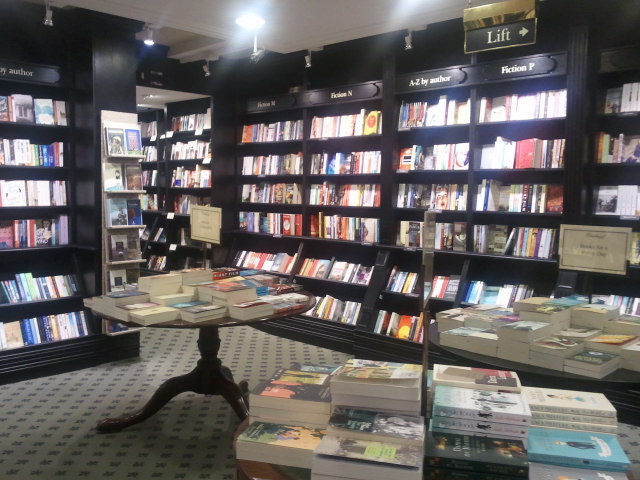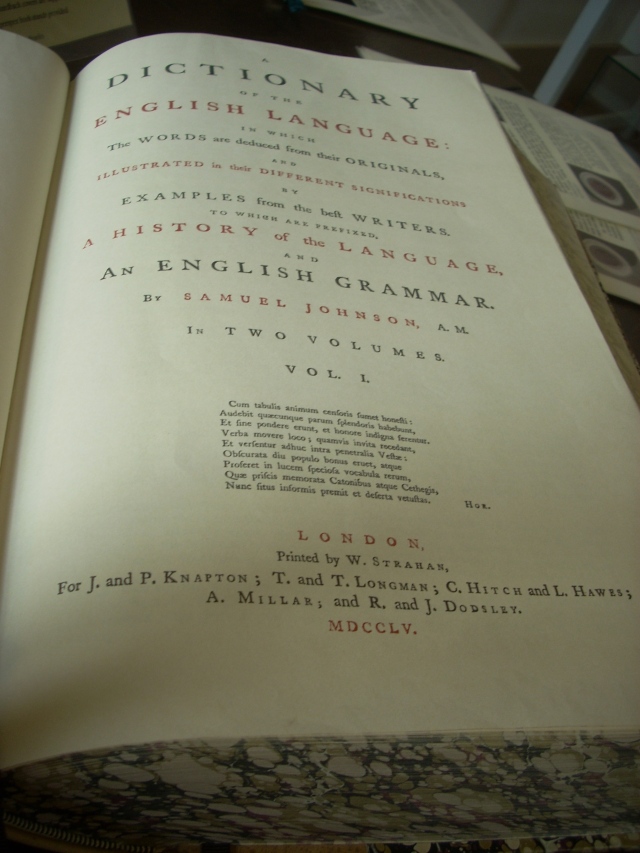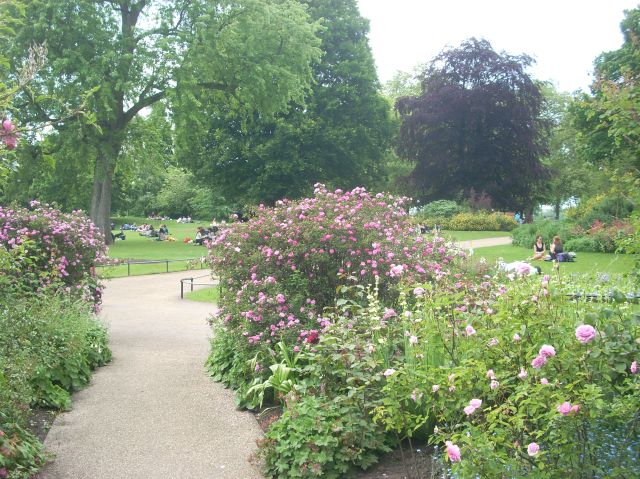Damn tourists, I muttered to myself as I pushed past a group of teenagers dressed in matching red T-shirts. I’d veered off a main road on to a side street in Soho to avoid the crowded sidewalks, yet there I was, confronted with a swarm of bodies, who seemed to serve only one purpose: to get in my way.
Of course I was aware that I, just like them, was a tourist in London. And I realized that while I tried to remain aware of my surroundings, it was possible that at some point when I paused to snap a picture of the London Eye or of Big Ben, I might have—unintentionally, of course—stood in someone’s way as they tried to get past. I could have been an annoyance to a Londoner or a few as they rushed to get to work, or home or to meet someone. I, however, didn’t have any appointments to get to. I merely wanted to make sure I could make the most of my time in England’s glorious capital. I didn’t want to miss out.
When choosing where to go on vacation, London was an easy decision. I’d been only once before, 10 years ago, and loved every inch and second I experienced there. Of course I had barely scratched the surface, merely dipped my toe in the water. So I wanted to go back. I yearned to go back. But I also wanted to see more of England than just its biggest city.
A couple of years ago, I read about the Larkin Trail, a self-guided tour of landmarks related to the life and poetry of Hull-based poet Philip Larkin. There is much to say about my time in Hull, about following in the footsteps of a poet whose work I greatly admire. But those words are not meant for this post. Larkin’s Hull deserves its own space. So that will be put on hold for later. This post is for London.
I wanted to return to many of the places I’d seen before, and, in fact, I did revisit many of them. I knew I wanted to go back to the British Library, where I viewed a manuscript of Beowulf from the 11th century, the Magna Carta, Jane Austen’s writing desk, W.H. Auden’s notebook and many other items.
I returned to the Tate Britain (partly to view the collection of J.M.W. Turner works) and the National Gallery, and I visited both the Tate Modern and the National Portrait Gallery each for the first time.
I spent a fair amount of time browsing books in various bookshops.
I’d read about Daunt Books and Hatchards, London’s oldest bookstore, and made specific visits to both of these shops.
I’d also heard about the Southbank Centre Book Market under the Waterloo Bridge. It was as lovely as it sounded.
However, even with all the browsing I did, I told myself I could only buy books if they weren’t easy to get back home. So the only books I purchased in England were ones written by two of my favourite comedians (who happen to be English), David Mitchell and Jon Richardson.
And I couldn’t visit England without exploring some of the tea culture. I had a nice cream tea in Soho’s Secret Tea Room. The tea room is located above the Coach & Horses pub, and you have to inquire at the bar before they show you the way upstairs. I sat by the open window and enjoyed a pot of English Breakfast tea and two scones slathered with clotted cream and jam.
At Fortnum & Mason, I explored the selection of both loose leaf and bagged teas and left with a box of their Royal Blend.
I also took a stroll over to the Twinings Strand shop and museum.
If you like tea and history, this place is a bit of a dream. I browsed some of the items in the museum, then took a seat at the bar to sample a few teas and chatted with one of the employees to learn more about the story of Twinings.
The shop remains in its original location (216 Strand) from 1706, when Thomas Twining bought Tom’s Coffee House and began serving tea in addition to coffee. I also learned that literary figures such as Jane Austen and Samuel Johnson were frequent customers. To think I was standing and sipping tea in the very same place that these two great minds did.
Speaking of Samuel Johnson, his house wasn’t a place I had planned on seeing. But when I looked at the map earlier to figure out how to get to Twinings, I saw the house was only a few blocks away. I decided to check it out. It was a nice surprise when the Twinings employee told me of Johnson’s connection to the tea shop.
The house is where Johnson lived and where he worked on A Dictionary of the English Language.
I was quite interested in seeing the hub of British broadcasting, the headquarters of the BBC. Although I didn’t bother with paying for a tour, security was helpful and showed me a place where I could watch the newsroom in action.
There were some places I came across by accident rather than design. Buckingham Palace proved to be unavoidable. That’s not to say I was particularly trying to avoid it, but, rather, I was just not interested in seeing it. I saw it 10 years ago, which was good enough for me. But I ended up walking by it at least a couple of times on different days.
I also hadn’t planned on going through Sloane Square, but that ended up being a pleasant surprise one evening. Of course as I walked through it I heard Morrissey singing in my head (“All around Sloane Square…“).
The weather was beautiful in London for almost the entire time I was there, which was surprising not only because it’s in opposition to the stereotypical rainy weather, but also because Toronto was experiencing its share of cool, rainy weather the week leading up to my flight. While I expected to get stuck in the rain at least a couple of times while I was away, I found that it was sunshine that drenched me.
On the day before my flight home, London was a bit cool and the rain did come, but only in the form of drizzle—just enough to cause me to put up my hood on my jacket, but not enough to force me to open my umbrella. I was actually happy for the precipitation. If it had been sunny the entire time, I wouldn’t have felt that I had the complete London experience.
Of course the rain came on the day I decided to do a walking tour. While I mostly write about words and books on this blog, my other great love is music, particularly British popular music, so the tour I chose was Rock ‘n’ Roll London.

Denmark Street: a small London street with multiple connections to the history of British popular music
I did a lot of walking on this trip, but it wasn’t always rushing from A to B, cursing at people under my breath. In fact, more often than not, I was strolling at a leisurely pace, taking time to pause and reflect.

in the shade in Green Park
When the sun was out, people were everywhere—lying in the grass, cycling, sitting on park benches and picnic blankets, rollerblading, jogging.

Hyde Park: pedestrians on one side; bicycles on the other. And Londoners adhere to this. Hallelujah!
Goodbyes are never easy, and this one was no different. My last evening was spent in the National Gallery, and as I moved room through room in awe of the art before me, I caught myself feeling a bit sad. It wasn’t just that I didn’t want to return to the routine that I knew was waiting for me at home, but I wasn’t ready to leave London, a city I love so much. I’d enjoyed everything I’d seen and experienced, yet I knew there was so much I’d left untouched.
Earlier that same day, while I was on the walking tour, I overheard our guide speaking with an American. The American was going on about how wonderful London is, and our guide, who is originally from Edinburgh, agreed, noting that he’s lived in London for 23 years now. “I just can’t get to the bottom of it,” he said of the city. “It’s relentless.”
And that’s why I know I will return again.



























